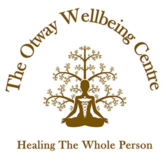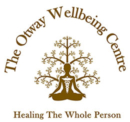
I am always curious to hear what new discoveries are being made about cow milk consumption. Menopausal women are told they must have adequate levels of calcium in their diet in order to protect their bones, but is milk the best source of calcium for this?
A new study published this year has found that dairy intake in women aged 45 to 55 years does not affect the rate of bone loss or fractures. Some observational studies even suggested consumption to be associated with an increased risk of fractures. Calcium supplementation is associated with less bone mineral density loss, but does not lessen the risk of bone fracture throughout menopause.
The bone-thinning condition called osteoporosis can lead to small and not-so-small fractures. Although many people think of calcium in the diet as good protection for their bones, this is not at all the whole story. In fact, in a 12-year Harvard study of 78,000 women, those who drank milk three times a day actually broke more bones than women who rarely drank milk. Similarly, a 1994 study of elderly men and women in Sydney, Australia, showed that higher dairy product consumption was associated with increased fracture risk. Those with the highest dairy product consumption had approximately double the risk of hip fracture compared to those with the lowest consumption.
To protect your bones you do need calcium in your diet, but you also need to keep calcium in your bones.
How to keep calcium in your bones
Green Leafy Veggies and Beans
The healthiest calcium sources are green leafy vegetables and legumes. Broccoli, Brussels sprouts, collards, kale, bok choy, turnip greens, mustard greens, Swiss chard, and other greens are loaded with highly absorbable calcium and a host of other healthful nutrients. The exception is spinach, which contains a large amount of calcium but tends to hold onto it very tenaciously, so that you will absorb less of it.
Beans are humble foods, and you might not know that they are loaded with calcium. There is more than 100 milligrams of calcium in a plate of baked beans. If you prefer chickpeas, tofu, or other bean or bean products, you will find plenty of calcium there, as well. These foods also contain magnesium, which your body uses along with calcium to build bones.
Dairy
Dairy products do contain calcium, but it is accompanied by animal proteins, lactose sugar, animal growth factors, occasional drugs and contaminants. If you are having dairy go for organic and unpasteurised options. Quality is crucial!
Nuts and Seeds
Almonds and Brazil nuts are quite high in Calcium as well as Chia Seeds, Pumpkin Seeds and Sesame seeds
Exercise
Active people keep calcium in their bones
Exercise is important for many reasons, including keeping bones strong. Active people tend to keep calcium in their bones, while sedentary people lose calcium. Aim for at least 30-40 mins of good exercise per day and weight baring exercises (Yoga is great!) to help keep bones strong.
Get vitamin D from the sun, or supplements if you need them.
Vitamin D controls your body’s use of calcium. About 15 minutes of sunlight on your skin each day normally produces all the vitamin D you need. If you get little or no sun exposure, you can get vitamin D from any multiple vitamin.
How to Keep Calcium in your bones
It’s not enough to get calcium into your bones. What is really critical is keeping it there. Here’s how:
Reduce calcium losses by avoiding excess salt.
Calcium in bones tends to dissolve into the bloodstream, then pass through the kidneys into the urine. Sodium (salt) in the foods you eat can greatly increase calcium loss through the kidneys. If you reduce your sodium intake to one to two grams per day, you will hold onto calcium better. To do that, avoid salty snack foods and canned goods with added sodium, and keep salt use low on the stove and at the table.
Don’t smoke.
Smokers lose calcium, too. A study of identical twins showed that, if one twin had been a long-term smoker and the other had not, the smoker had more than a 40 percent higher risk of a fracture

